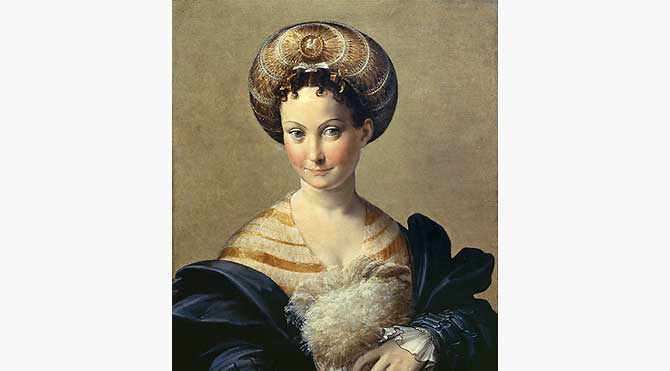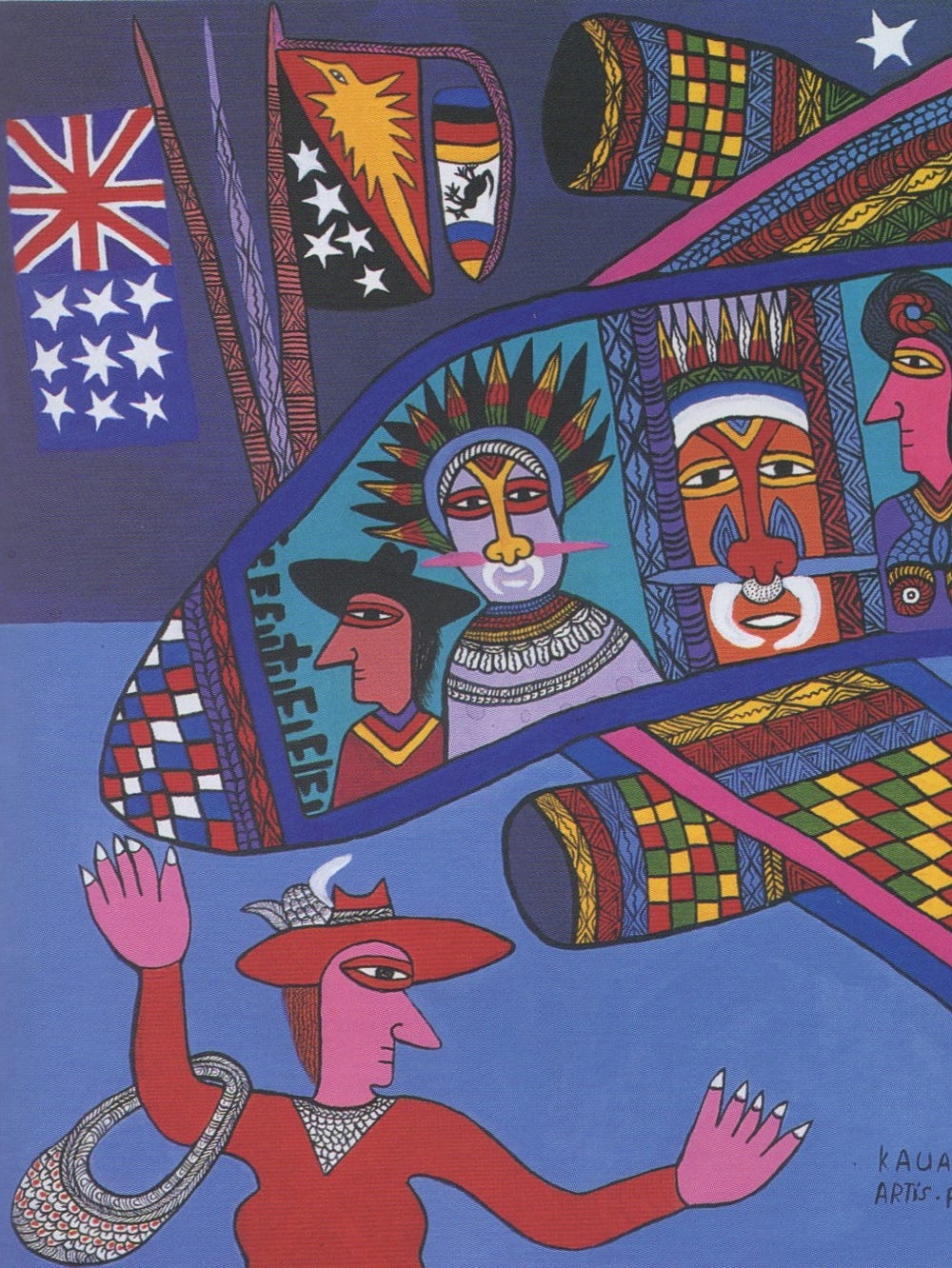Francesco Mazzola, known as Parmigianino, Schiava turca, ca. 1531 – 1534. Oil on panel. Galleria Nazionale di Parma. Photograph © Ministry of National Heritage, Culture, and Tourism
The Poetry of Parmigianino’s “Schiava Turca”
Jump to
A loan from the Galleria nazionale di Parma in Parma, Italy, provides a rare opportunity for viewing Parmigianino’s masterpiece Schiava turca (ca. 1531 – 1534). Heralded as an originator of Mannerism, Parmigianino developed an expressive style with elongated forms that was also indebted to the work of Raphael and Michelangelo. The title, which translates to “Turkish slave,” derives from the subject’s elegant balzo, a fashionable headdress worn by elite Northern Italian women, which was later mistaken for a turban. The Legion of Honor displays this painting following its exhibition at The Frick Collection, New York.
Parmigianino (Italian, 1503 – 1540) was, after Correggio, the most celebrated painter from his birthplace of Parma. Heralded as an originator of Mannerism, he developed an expressive, personalized style. His active years were spent entirely in Italy, though his fame and reputation spread across Europe through the wide dissemination of his etchings, which displayed tremendous skill. In its emphasis on elegantly attenuated forms, Parmigianino’s work is characterized by an opposition to the naturalistic style established by earlier Renaissance painters.
Schiava turca, which portrays an unknown young noblewoman, was painted at the end of the artist’s three-year stay in Bologna or upon his return at this time to his native Parma. Its exotic title first appeared in a 1704 inventory, when the painting was part of the collection of Cardinal Leopoldo de’ Medici in the galleries at the Palazzo degli Uffizi. Her elegant headdress had been mistaken for a turban, since the subject had been thought to be a Turkish slave. In fact, the round balzo was a fashion accessory invented by or for Isabella d’Este and worn by Northern Italian women, and appears in several other portraits of the period. The balzo seen here is sewn with gilt thread and decorated with a medallion of Pegasus, a symbol of poetic inspiration. Scholars have proposed that the insignia may be a heraldic reference to a family in Casalmaggiore, near Parma.
It has been suggested that the picture portrays the noblewoman Giulia Gonzaga, at the time of her marriage to Vespasiano Colonna, but definitive identity has yet to emerge. The meaning of the portrait also remains an open question.
About the Galleria Nazionale di Parma
The Galleria nazionale di Parma (National Gallery of Parma) is located in the Palazzo della Pilotta in the historic city center of Parma, Italy, and holds a large collection of works from the Italian Renaissance, including paintings by Parmigianino, Correggio, Leonardo da Vinci, and Tintoretto. The holdings derive from the collection established by the Farnese family during the Renaissance, which was subsequently divided in 1734 by Charles III of Spain, who transferred some works to Naples. The collection that remained in Parma was briefly moved to Paris during the French occupation (1796 – 1814) of Napoleon I. In 1816, Marie Louise of Austria, duchess of Parma and Napoleon’s second wife, restored the works to their current location in the former residence of the Farnese.
Sponsors
The Poetry of Parmigianino’s “Schiava Turca” is organized by the Fine Arts Museums of San Francisco and The Frick Collection in collaboration with the Foundation for Italian Art & Culture (FIAC). The presentation at the Legion of Honor is made possible by a lead sponsorship from the Frances K. and Charles D. Field Foundation, in memory of Mr. and Mrs. Charles D. Field, for which the Fine Arts Museums are most grateful.



